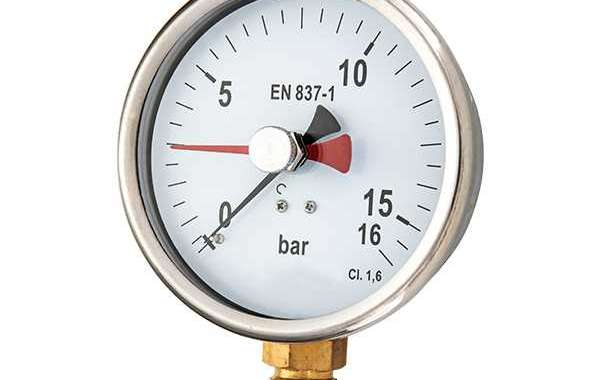Pressure gauges, especially shock-proof pressure gauges, are cheap. If selected and installed correctly, they can ensure trouble-free use for several years.
Selection
*The pressure gauge should be equipped with a safety glass or plastic lens. The lens should be compatible with the surrounding environment (temperature limit or resistance to erosion by liquids or vapors).
*The pressure gauge should have anti-spray protection, as well as weatherproof and corrosion-resistant housing. Note: The blowout preventer prevents any process materials from being released from the front or surface of the case.
*The braid or siphon is used in steam and other high-temperature condensable steam facilities.
Pressure gauge installation
*Before installing the pressure gauge to the pressure source, please check whether the maximum scale value of the pressure gauge is higher than the applied pressure. For stable pressure, the applied pressure should be 75% of the maximum proportional value, and for fluctuating pressure, it should be 65% of the maximum proportional value.
*Before installing the pressure gauge on the pressure source, please check whether the wetted parts are compatible with the fluid used, and the pressure connection is correctly matched to the pressure of the pipeline. When installing the pressure gauge on the pipe, please use the correct sealing method.
*Do not use the gauge box to tighten the gauge to the pipe, please use the correct size wrench on the hexagonal neck.
*The pressure gauge with a pressure relief device on the back must be installed at least 20 mm away from the panel or wall to ensure that the restricted pressure can be safely dissipated when the pipe ruptures.
*Instruments marked "Hydraulic" must not be used for compressed gas.
*If used for these gases, the gauge must be marked with "oxygen" or "acetylene" on the dial.
Use 0f pressure gauge
*Do not use glycerin-filled pressure gauges for any fluid with strong oxidants, such as chlorine, hydrogen, peroxide, etc.
*The ambient temperature and process temperature acting on the pressure gauge should be within -70OF to +180OF, and the following measures should be taken to prevent it from being affected by higher fluid temperatures: a condensate pipe with a siphon before use.
*Do not allow the fluid in the pressure chamber to freeze or crystallize, as this will cause the sensing element to rupture.
*If the pointer of any pressure gauge does not return to zero after the pressure is removed, it indicates that the pressure gauge is damaged, and the pressure gauge should be replaced immediately.







